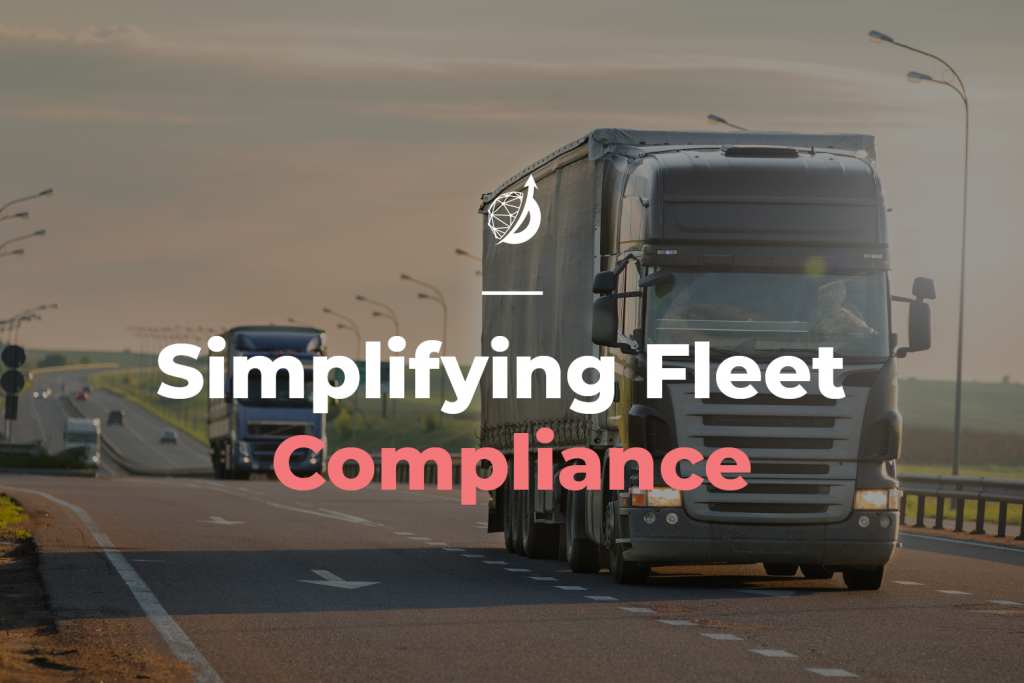Does Fleet Compliance Feel Like Endless Work? Try a Data-Driven Approach.

As many fleet managers will tell you, compliance isn’t a “one and done” task. Instead, it requires a constant eye on changes within the regulatory environment and within your fleet. But despite its reputation as a major time drain, compliance doesn’t have to feel like extra work. With the right tools and the right data-centric strategy, you can keep track of the many moving parts—and keep your fleet on the road, downtime-free.
The elements of an effective fleet compliance strategy
If you’ve read the Onward blog, you’ve heard us talk about the value of a full-picture approach to fleet management. It all starts with data. The best asset management solutions, for example, connect the dots across all the areas associated with your asset. Calculating your TCO requires a similarly integrated approach, tracing spending data from acquisition through remarketing. Fleet compliance is yet another area where a comprehensive data strategy can enhance your results; in this case, eliminating safety risks, alerting you to DOT compliance issues and streamlining your documentation so that your assets stay on the road, where they belong.
A comprehensive compliance strategy might sound difficult to achieve. But most likely, you’re already using three tools that can make the process a whole lot easier: GPS, an asset management system and safety technology. On their own, one out of three will boost your compliance efforts. But using all three is the real game-changing move. Why? Because when you can quickly access the data you need, compliance becomes surprisingly simple.
It’s no secret that GPS adoption is on the rise. In one survey, 64% of respondents used fleet tracking software, and 45% achieved a positive ROI within 11 months or less of implementing it. Reduced labor costs, enhanced asset utilization and improved safety are three areas where telematics delivers clear value. Taken on its own, GPS data can greatly ease compliance documentation (think: Hours of Service) and track critical data points on maintenance and driving behaviors. It can also help you prepare for successful inspections. But when GPS data is integrated with your asset management system, the result is even more powerful.
Your asset management system provides robust visibility into each asset across the entire life cycle, from acquisition to remarketing. As such, it’s home to a powerhouse of data insights ripe for optimization. Effective asset management can help you calculate your TCO and make smarter fleet management decisions based on data in real time (or close to it). It can also alert you to potential compliance issues, help you keep tabs on licensing and titling, and eliminate safety risks through effective maintenance. By making GPS data part of your asset management strategy, you’re not just eliminating a critical silo; you’re also ensuring that there aren’t any blind spots in your safety and compliance strategy. The more organized you are with your data, the easier it will be to prove your assets are DOT compliant and react faster to the inevitable regulatory change.
Asset management and GPS solutions are critical tools for collecting and analyzing data. But in terms of fleet safety technology, that’s just the tip of the iceberg. Collision warning and mitigation systems can help prevent accidents when your assets are out on the road. Meanwhile, AI-driven driver training is helping fleets move the needle on road safety. But even if your assets aren’t equipped with sensors and cameras, you can take your safety and compliance one step further with predictive analytics. Predictive maintenance, prescriptive analytics and other data-driven tools can significantly reduce your fleet’s safety risks, which is essentially what compliance is all about. By exploring safety technologies and predictive analytics, you can prepare your fleets for the future of compliance.
More fleets than ever are using data-centric tools to simplify safety and compliance. But there’s another value-add to this approach: armed with complete, easily accessible data, you’ll be equipped to identify best practices that optimize your entire fleet management strategy. (And we don’t have to tell you that in today’s dynamic fleet management landscape, every optimization matters.)
Still searching for guidance on safety and compliance? Not sure how to leverage your asset management solution or GPS data to its full potential? Reach out to Onward. We’re here to help you connect the dots across your fleet management strategy, unlocking game-changing optimizations at every stage of the life cycle.
